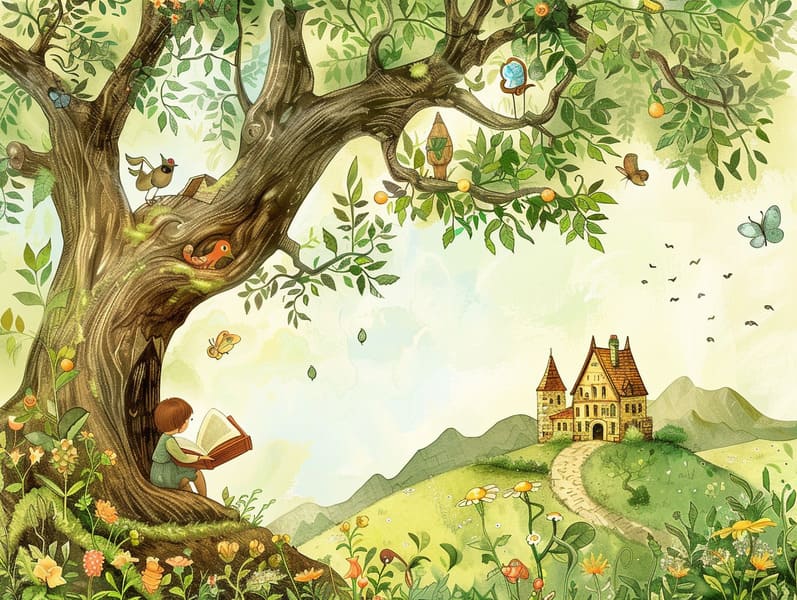
Best fairy tales have old origins. These narratives have been whispered from one generation to the next far before they were ever published. They arose from a variety of backgrounds, including Middle Eastern traditions. They were initially narrated among grown-ups, often carrying themes and messages reflective of the societal norms and beliefs of the time.
The renowned Brothers Grimm, the two Grimm brothers, were among the first to compile many of these beloved tales. Their anthology, "Grimm's Fairy Stories," included narratives like "Ashenputtel," "The Bread Crumb Trail," and "Snow White," which have since become cornerstones in the world of traditional fairy tales. Similarly, Hans Christian Andersen's enchanting narratives, such as "The Story of the Little Mermaid," and "The Story of the Ugly Duckling," have captured hearts worldwide, solidifying their place in the pantheon of iconic fairy tales.
Despite their historical roots, traditional fairy tales remain as significant as ever, especially as children's night stories. These charming stories are now available in different formats, including richly illustrated books, magical animations, and digital fairy tales.
Their lasting appeal can be credited to several enchanting factors:
Ethical Lessons: Traditional fairy tales often impart important moral lessons. Narratives like "The Shepherd Boy and the Wolf" teach the merit of truth, while "The Race of the Tortoise and the Hare" show the values of perseverance and humbleness. These narratives offer little ones clear distinctions between truth and falsehood, guiding their moral compass in a soft yet important way.
Compassion and Insight: Fairy tales frequently depict personalities facing tests and troubles, motivating audiences to connect with their struggles and rally behind their triumphs. For instance, "Beauty's Beast" points out the value of seeing beyond the surface to acknowledge the inner being of a being, developing understanding and awareness.
Cultural Perception: Many ancient fairy tales are imbued with the cultural contexts from which they developed. Understanding these fairy tales can provide fascinating glimpses into different societies, strengthening a sense of world insight and appreciation.
Inventiveness and Imagination: The enchanted elements in timeless fairy tales—enchanted lands—ignite children’s visions and dreams. These narratives lead readers to imaginary realms, inspiring fantastical thinking and a sense of marvel that lasts a lifetime.
Traditional fairy tales are not only entrancing but also pedagogical. They act as entrancing tools in strengthening various intellectual and emotional capacities in little ones. When traditional fairy tales are told out loud, they boost language acquisition by offering new terms and complex sentence structures. This practice also promotes listening abilities and attention, as children keep up with the story, keen to see what happens next.
Furthermore, examining the themes and characters of timeless fairy tales can develop thinking skills and logical thinking. Young ones are educated to discern patterns, forecast, and grasp cause and effect. These analyses also contribute to children express their thoughts and feelings, promoting their emotional intelligence.
In today’s technological era, the presence of internet fairy tales has made these tales more acquirable than ever. Web platforms and programs feature ample collections of classic fairy tales that can be enjoyed or listened on anytime, anywhere. Fairy tales read out loud are particularly well-liked, giving an interactive way for children to enjoy these charming stories. Narrated books and read-out-loud videos carry characters and settings to life, often joined by bewitching sound effects and musical scores that amplify the narrative adventure.
The enduring charm of traditional fairy tales lies in their ability to alter to contemporary times while maintaining their main lessons. Contemporary reinterpretations of these stories often bring in more representative protagonists and modern settings, making them accessible to today’s audience. However, the underlying themes of braveness, humanity, and even-handedness remain unchanged, continuing to impact children of all ages.
Classic fairy tales also offer a sense of assurance and knowability. They extend a orderly narrative with a clear beginning, middle, and end, often finishing with the termination of conflicts and the triumph of justice over injustice. This predictability can be calming for little ones, distributing a sense of invariability in an ever-changing world.
Traditional fairy tales continue to spellbind and educate new generations, maintaining their elegance and importance in modern society. As children's bedtime stories, they render a perfect blend of enchantment and education, fostering moral values, empathy, and creativity. The accessibility of online fairy tales and the well-liked nature of fairy tales narrated validate that these traditional fairy tales remain reachable to new generations.
By holding onto find it here and releasing these narratives, we continue to extol the rich tapestry of creativity and cultural heritage. Whether you are discovering a artistically illustrated book, perusing a electronic collection, or listening on an audio story, the loveliness of traditional fairy tales is always within reach. These stories convey of the continued spell of fairy tales and its ability to bind us across eras and regions.
No matter if you are perusing a vibrantly illustrated book, delving into a internet library, or hearing an sound book, the elegance of popular fairy tales is always within reach.
These narratives reveal of the steadfast nature of fairy tales and its ability to bind us across eras and regions, establishing a link that enchants and educates alike.